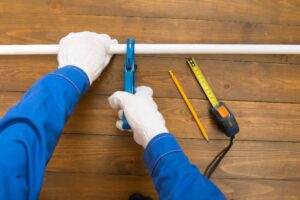Aug . 21, 2024 09:27 Back to list
PPR Pipes for Efficient Hot Water Supply Solutions and Applications
PPR Pipes for Hot Water Supply An Overview
In recent years, the plumbing industry has witnessed a significant shift towards using more efficient, durable, and environmentally friendly materials. One such material that has gained widespread popularity is Polypropylene Random Copolymer (PPR) pipes, which are particularly recognized for their application in hot water supply systems. This article explores the advantages, features, and applications of PPR pipes, emphasizing why they are becoming a preferred choice for both residential and commercial plumbing needs.
What are PPR Pipes?
PPR pipes are composed of a thermoplastic polymer known for its resistance to high temperatures and pressures. These pipes are manufactured through a process that ensures high quality and durability. PPR is categorized into three types based on the pressure rating, which makes it suitable for various applications. The common green and white colors of PPR pipes also help in identification and classification.
Advantages of PPR Pipes
1. Thermal Resistance PPR pipes can withstand temperatures as high as 95°C, making them ideal for hot water supply systems. Unlike traditional materials like PVC or galvanized iron, PPR does not deform or become brittle under heat, ensuring consistent water supply temperatures.
2. Longevity With a lifespan exceeding 50 years under proper conditions, PPR pipes offer excellent durability. Their resistance to corrosion, scale formation, and chemical exposure contributes to their long-term performance, which ultimately reduces replacement costs.
3. Lightweight and Ease of Installation PPR pipes are significantly lighter than metal pipes, which not only simplifies transportation but also makes installation easier. They can be easily cut and joined using welding techniques, reducing labor time and costs.
4. Safety and Hygiene PPR is a non-toxic material and does not leach harmful chemicals into the water supply. This makes it a safer option for transporting hot water, ensuring that the water remains clean and uncontaminated. The smooth interior surface also prevents the accumulation of bacteria and deposits.
ppr pipe for hot water supply products

5. Energy Efficiency The low thermal conductivity of PPR pipes helps maintain the temperature of hot water, reducing energy loss during transportation. This energy efficiency results in lower utility bills for consumers.
Applications of PPR Pipes
PPR pipes are versatile and can be used in various applications beyond just hot water supply. They are ideal for
- Residential Plumbing Ideal for domestic hot water systems, PPR pipes are used in bathrooms, kitchens, and heating systems, ensuring a reliable hot water supply.
- Industrial Use Many industries, including food processing and pharmaceuticals, prefer PPR pipes for their hygienic properties and chemical resistance.
- Heating Systems PPR pipes are extensively used in underfloor heating and radiator systems, providing efficient heat distribution.
- Recycling and Water Supply Their long lifespan and resistance to chemicals make PPR pipes suitable for recycled water systems and other water supply purposes.
Conclusion
PPR pipes represent a modern solution to the challenges faced in hot water supply systems. With their exceptional thermal resistance, durability, and environmental benefits, they are increasingly becoming the go-to choice for homeowners, plumbers, and engineers alike. As the demand for reliable and efficient plumbing solutions continues to rise, PPR pipes stand out as a significant advancement in the field, ensuring that we have safe and efficient systems for hot water supply in both residential and commercial applications.
-
High-Quality PVC Borehole Pipes Durable & Versatile Pipe Solutions
NewsJul.08,2025
-
High-Quality PVC Perforated Pipes for Efficient Drainage Leading Manufacturers & Factories
NewsJul.08,2025
-
High-Quality PVC Borehole Pipes Durable Pipe Solutions by Leading Manufacturer
NewsJul.08,2025
-
High-Quality PVC Borehole Pipes Reliable PVC Pipe Manufacturer Solutions
NewsJul.07,2025
-
High-Quality UPVC Drain Pipes Durable HDPE & Drain Pipe Solutions
NewsJul.07,2025
-
High-Quality Conduit Pipes & HDPE Conduit Fittings Manufacturer Reliable Factory Supply
NewsJul.06,2025

